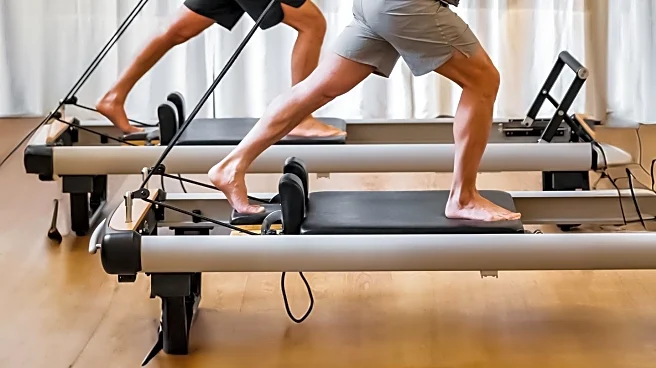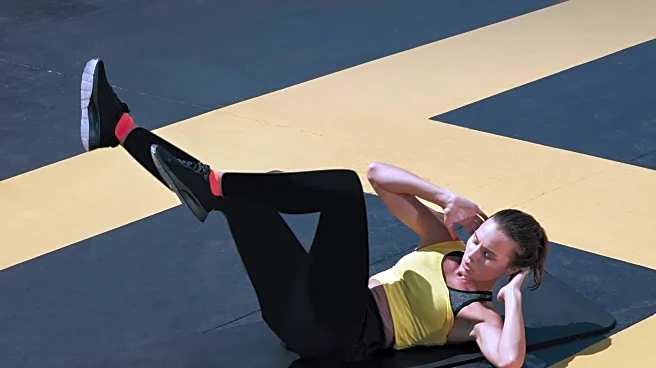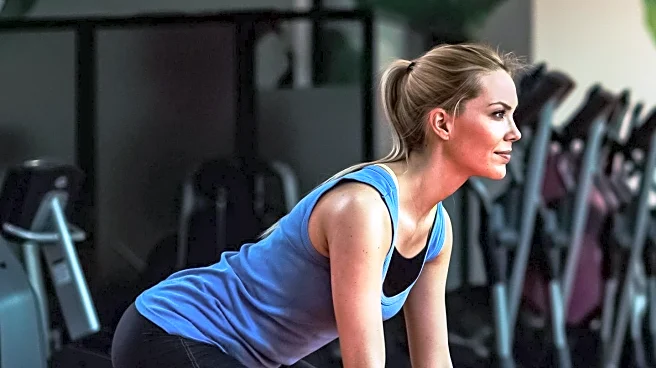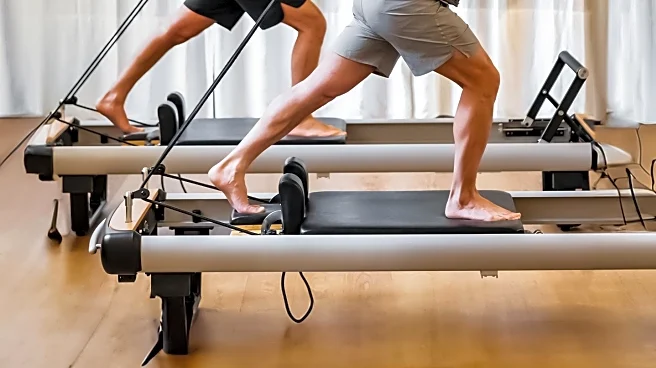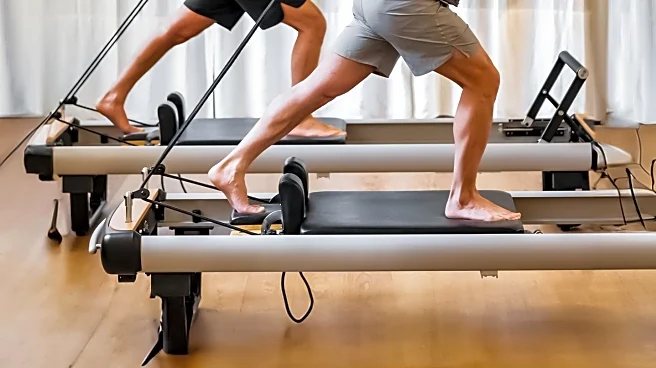What's Happening?
NASM-certified personal trainer Mallory Fox emphasizes the importance of stretching after walking to aid recovery and prevent muscle stiffness. Fox suggests that even lower-impact activities like walking can lead to muscle soreness, and incorporating a stretching routine can enhance overall recovery and performance. She recommends three types of stretches: static calf stretch, active hip flexor stretch, and dynamic hamstring stretch. These stretches are designed to improve flexibility, reduce muscle stiffness, and prevent injuries by maintaining muscle and tendon elasticity.
Why It's Important?
Stretching after physical activity is crucial for maintaining muscle health and preventing injuries. For regular walkers, especially those who engage in long or intense walks, stretching can help cool down the body, improve flexibility, and reduce muscle stiffness. This practice is beneficial for enhancing mental wellbeing and reducing physical stress. By maintaining the elasticity of muscles and tendons, stretching can prevent injuries, making it an essential part of a fitness routine for walkers.
What's Next?
Individuals who regularly walk or engage in physical activities are encouraged to incorporate stretching into their routine. Listening to one's body and adjusting the stretching routine based on fitness levels and goals can optimize recovery and performance. Trainers and fitness enthusiasts may continue to advocate for stretching as a vital component of post-exercise recovery, potentially influencing public health recommendations and personal fitness practices.
Beyond the Headlines
The emphasis on stretching highlights a broader trend in fitness that prioritizes recovery and injury prevention. As more people engage in walking as a form of exercise, understanding the benefits of post-walk stretching could lead to increased awareness and adoption of recovery practices. This focus on recovery aligns with a holistic approach to fitness, where mental and physical wellbeing are interconnected.



